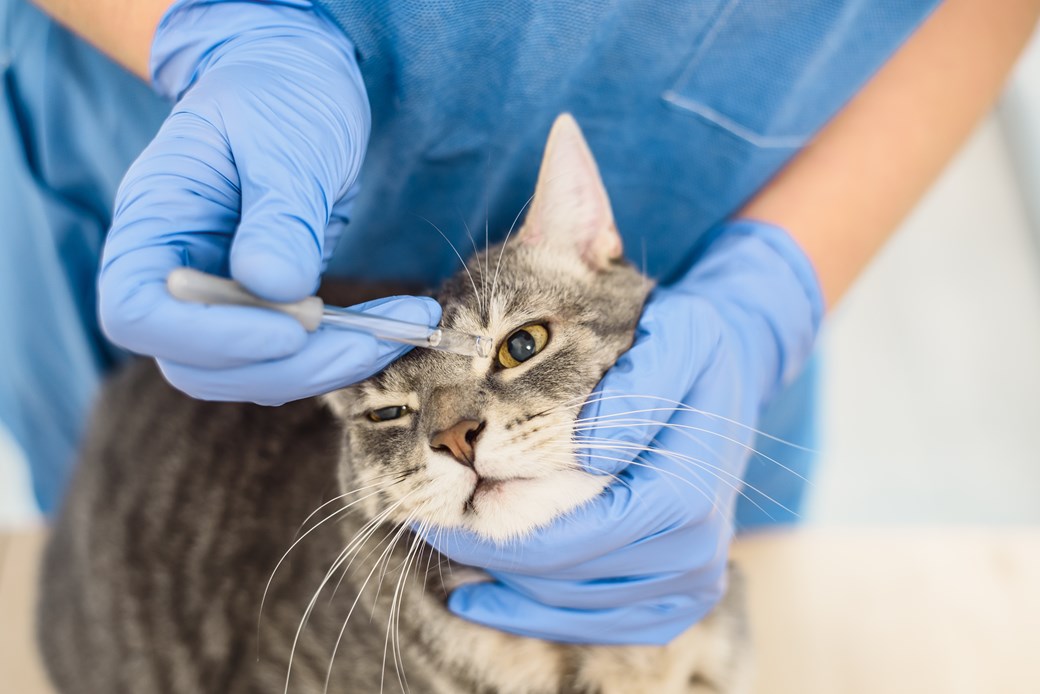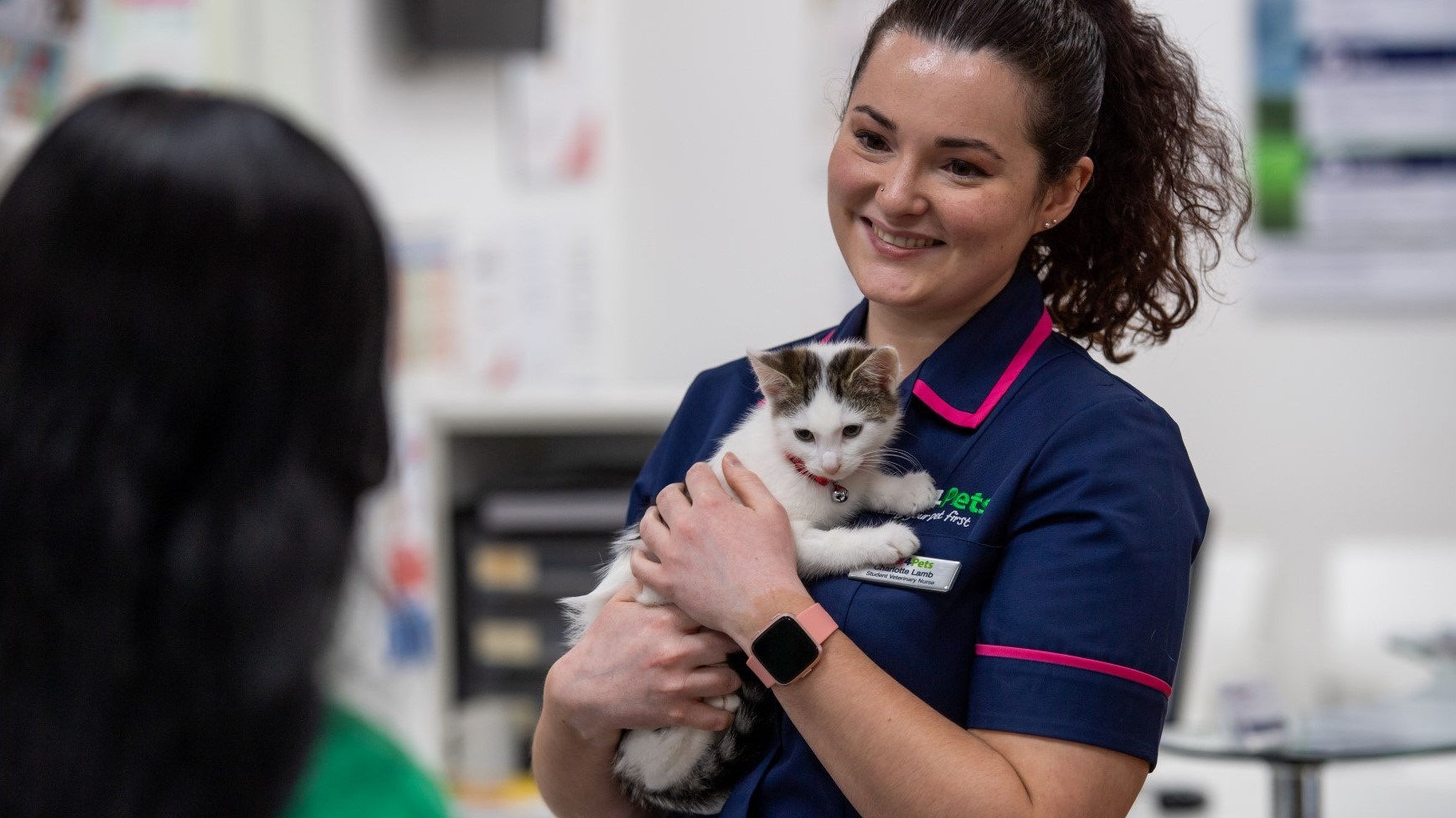
How to give eye medication to cats
One of the most common ways to treat eye conditions is by using eye drops or ointment.
Only use the products your vet has advised in your pet’s eyes as some drops and ointments, over-the-counter medications for humans can make some eye problems worse.
Before you administer the medication to your cat, make sure you are familiar with how to make the drops or ointment come out as the design of bottles and tubes can vary. Also check how much you need to apply.
If your cat’s eye is painful or itchy, they might not like anyone touching the area. If they are anxious or defensive and moving away from your hands, or trying to bite or scratch you, it can be difficult to apply eye medication precisely. If you’ve ever had eye medication yourself, you’ll know that it can feel strange to have drops or ointment in your eyes, and pets can feel the same way.
You can ask your vet or nurse to show you how to give your pet eye medication before you return home to do it by yourself.
Cats can be a bit trickier than dogs, especially if they haven’t had any training to have their faces or the area around their eyes touched. They can be wriggly and sometimes bite if they’re frightened. They’ll also scratch if they don’t want something near.
If your cat is laid back, you may be able to put in their eye drops without a helper. Some cats are more relaxed if you are calm and if they don’t feel trapped, so try the ‘less is more’ approach if you think this might work better for your cat. However you decide to do it, here's some simple steps to follow:
- If your cat isn’t happy having their eye drops or ointment, you’ll need to use some gentle restraint. Ask a helper to cuddle your cat into their body, either in their lap or on a table and facing outwards. To reduce the chances of getting scratched, your helper can slide a hand underneath your cat to hold their front legs (between the cat’s wrist and elbow), keeping one or two fingers between your cat’s legs.
- Stand or sit behind your cat, rather than to the side, and use your body and arms to provide a ‘back-stop’.
- You can then use one hand to support your cat’s chin, tilt their head upwards slightly, and gently draw their lower eyelid down.
- Your other hand, with the base resting on top of their head, holds the eye medication in a pen grip. Keeping your hand steady tilt their head upwards and allow the medication to drop onto the surface of the eye.
You might find that, immediately after you apply the eye drops, they want to run away and/or are disinterested in a reward, but still have a treat ready. Cats who go outdoors might sometimes stop coming inside if they’re worried that something might happen to them, so think about keeping them indoors, with litter trays available, whilst they’re on medication.
Health Plans to keep your cat healthy
At Vets4Pets we offer a range of Health Plans that make essential routine treatments more affordable. You'll save money on things like annual vaccinations, flea and worm treatment and routine health check-ups.

Cat Advice
Read more of our expert cat advice to keep your cat happy and healthy.
